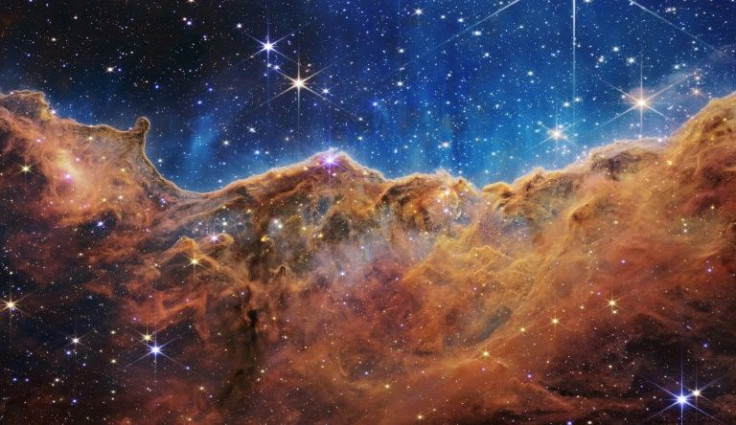Top 5 Scientific Discoveries And Breakthroughs Of 2022
The year 2022 was a big one for science, with many incredible breakthroughs and discoveries. Let's look back at some of the most incredible science stories of the year before we ring in the new year.
James Webb Space Telescope's first photos
Although the JWST was launched late in 2021, it delivered its stunning first photos this year. It includes incredible images of Stephan's Quintet, which is a group of five galaxies, and the "cosmic cliffs" of the Carina Nebula.
Its first Deep Field image featured galaxy cluster SMACS 0723, showing thousands of galaxies in a small patch of the sky. According to NASA, this was the "deepest and sharpest infrared image of the distant universe to date."
It's here–the deepest, sharpest infrared view of the universe to date: Webb's First Deep Field.
— NASA (@NASA) July 11, 2022
Previewed by @POTUS on July 11, it shows galaxies once invisible to us. The full set of @NASAWebb's first full-color images & data will be revealed July 12: https://t.co/63zxpNDi4I pic.twitter.com/zAr7YoFZ8C
NASA even turned the images into sound through sonification. The "music" of the Carina Nebula, for instance, encapsulates the brilliance of the now-iconic JWST photo.
What if you could hear Webb data?
— NASA Webb Telescope (@NASAWebb) August 31, 2022
Here, the “Cosmic Cliffs” are sonified, or translated to sound. Blue gas and dust sound windy, while a melodic line represents the rise and fall of the “mountain range.” Louder tones represent brighter light. More: https://t.co/yeOM4bUjoh pic.twitter.com/qr9WzWVWvN
Discovery of gigantic bacteria visible to the naked eye
When people think of bacteria, we picture extremely small cells that would need a microscope to be seen. But this year, a team of researchers discovered bacteria that are so "gigantic" that you can see them with the naked eye. Called Thiomargarita magnifica, they are about 5,000 times larger than other bacteria and appear quite like thin vermicelli strands.
"In the beginning I thought it was just something curious, some white filaments that needed to be attached to something." - Olivier Gros on the giant bacteria 🦠 he found in the Guadeloupe mangroves. https://t.co/tNqlkGaBnH@UnivAntilles @ScienceMagazine @ENERGY pic.twitter.com/1QK3h7ObsB
— Berkeley Lab (@BerkeleyLab) June 23, 2022
"To understand how gigantic that is for a bacterium, it is the same as if we were to find a human as tall as Mount Everest," study co-author Jean-Marie Volland told CNN back in June.
It has been dubbed the "world's largest bacterium." So, yes, 2022 was the year when researchers discovered bacteria so big that they can be seen with the naked eye.
Finding microplastics in human blood for the first time
From the wonders of space to giant bacteria, we now go to something that's rather concerning both for the planet and for people's health. A team of researchers detected plastic particle pollution in human blood for the first time earlier this year.
Although it is still unclear how exactly their presence in human blood could impact people's health, it does highlight the scope of the plastic problem that appears to be pervasive even inside people's bodies.
In fact, scientists also found microplastics in water trapped in plant leaves and in Antarctica's fresh snow, showing just how far-reaching the problem has become.
World's largest freshwater fish caught
The year saw a lot of firsts and records, and this includes the discovery of the largest freshwater fish in the world. A fisherman in Cambodia accidentally snagged a giant freshwater stingray in the Mekong River.
It measured 3.98 meters (13 feet) long, spanned 2.2 meters (7 feet, 2 inches) and weighed 330 kilograms (661 pounds).
កំណត់ត្រាពិភពលោក សម្រាប់ត្រីទឹកសាបដ៏ធំបំផុត មិនធ្លាប់មាននៅលើផែនដី ត្រូវបានបំបែក! ត្រីបបែលយក្សទឹកសាប ទម្ងន់ ៣០០គីឡូក្រាម ត្រូវបានអ្នកនេសាទ នៅប្រទេសកម្ពុជា ចាប់បានដោយសន្ទូច នៅតំបន់ជនបទនៃទន្លេមេគង្គ។...
It has since been certified by the Guinness World Records as the "largest freshwater fish to ever be officially recorded," and makes the species itself (Urogymnus polylepis) tied with the Mekong giant catfish as the largest freshwater fish species.
Not only was this a magnificent discovery, but also it provided a sign of hope for the threatened river giants of the world.
Hitting an asteroid on purpose
Back to space, this year also saw the successful attempt to alter an asteroid's orbit using kinetic impact with NASA's Double Asteroid Redirection Test (DART). In other words, the DART spacecraft slammed into the asteroid Dimorphos to alter its orbit and see whether we could actually do it should the threat of a hazardous asteroid arise.
The asteroid did not pose a threat to Earth. And although it seems like the plot of a movie, the success of the test shows it may actually be a plausible approach in the face of the threat.
It also gave us some incredible views to enjoy.
Last night, Nicolas Erasmus (SAAO) and Amanda Sickafoose (@planetarysci) successfully observed DART's impact with Dimorphos using the Mookodi instrument on the SAAO's 1-m Lesedi telescope.@fallingstarIfA also did a very similar measurement using ATLAS-Sutherland.#DART #NASA pic.twitter.com/olr4gV5SOV
— SAAO (@SAAO) September 27, 2022
These are, of course, only a few of the incredible scientific feats of the year. We also saw the success of the Artemis I mission, with Orion coming back to Earth after fulfilling its mission around the Moon. This year also saw great strides toward the creation of a universal flu vaccine.
The year 2023 may have more surprises in store for the scientific community. Who knows?

© Copyright IBTimes 2025. All rights reserved.






















